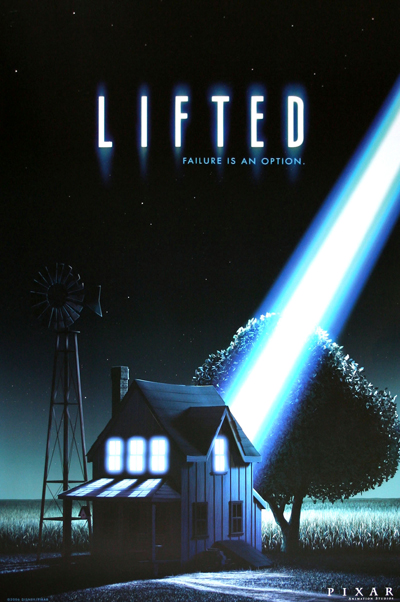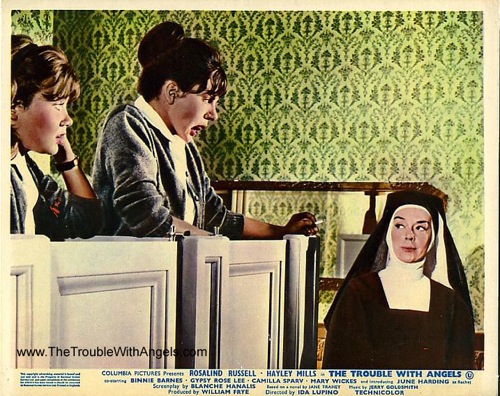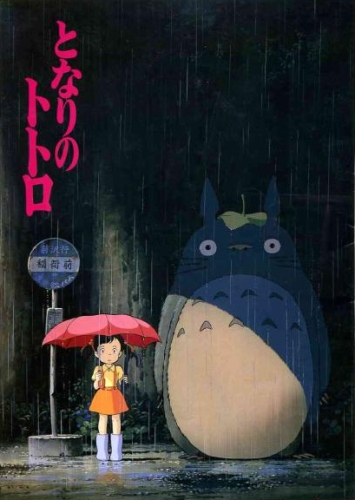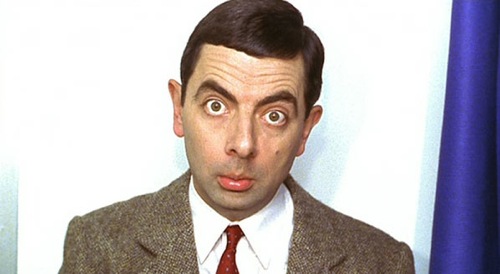 By David Ross. The sight of pelicans trudging through the black crud of the gulf may particularly resonate with parents. This is rather what it’s like to raise a kid these days. You try to fly above the mess, but you wind up covered in muck and drowning in sludge. The difference, of course, is that BP’s gulf catastrophe was accidental, while the engineers of the kiddy culture execute a conscious and cynical plan. With all of this in mind, let me – vigilant father of a four year old – share a few of our happier experiments in what my daughter calls “watching.”
By David Ross. The sight of pelicans trudging through the black crud of the gulf may particularly resonate with parents. This is rather what it’s like to raise a kid these days. You try to fly above the mess, but you wind up covered in muck and drowning in sludge. The difference, of course, is that BP’s gulf catastrophe was accidental, while the engineers of the kiddy culture execute a conscious and cynical plan. With all of this in mind, let me – vigilant father of a four year old – share a few of our happier experiments in what my daughter calls “watching.”
The live-action children’s films and TV of the last thirty years are largely moronic and corrosive. They militate against the values and mores of the adult world (discipline, delayed gratification, respect for legitimate authority, etc.), and acclimate kids to a norm of cliché. I wonder how many of the missing kids on the back of milk cartons we can attribute to the cliché of would-be adventurers sneaking out the window and climbing down the vine trellis? The best bet is simply to write off this swathe of cinematic history, the manipulative cultural politics of E.T. and Sesame Street included (see Kay Hymowitz’s classic essay in City Journal.)
My chief counter-recommendations are Lassie Come Home (1943) and National Velvet (1944), both starring Elizabeth Taylor and a roster of outstanding British character actors. I’m tempted to call these the best live-action children’s movies ever made. Both films are morally sophisticated without crossing the line into adult difficulty, and there is enough suspense at enough different levels to rivet the whole family. Other live-action gems are Cheaper by the Dozen (1950), starring the eternally charming Myrna Loy, and The Trouble with Angels (1966), starring Rosalind Russell and Hayley Mills.

The Trouble with Angels – which may be my very favorite kid’s movie – tells the story of a teenage troublemaker (Mills) who is sent to a convent school run by a formidable mother superior (Russell). Mills engages in various subversive high jinks – powdered soap in the sugar bowls, etc. – but gradually comes to respect the nuns’ example of quiet dignity and selflessness and in the end decides to join the order herself. What’s striking about the film from our twenty-first century perspective is how firmly and confidently it’s on the side of adult authority rather than teenage rebellion. The film takes for granted that Mills and her fellow students are ignorant and immature and that they require adult guidance; so too the film takes for granted that adults have something to teach.
The Trouble with Angels is no masterpiece, but it reminds us how radically the culture has changed. Far from teaching what it means to be an adult, today’s kiddy fare ceaselessly sounds the trumpet of revolt against parent and school, commitment and discipline, anything that thwarts the impulse of the moment. Practically, such films do the bidding of a trillion-dollar advertising-entertainment nexus that sees in every emancipated, impulsive child an emancipated, impulsive consumer. The contemporary American adult, meanwhile, submissively accepts the dismantling of his own authority, having absorbed over a lifetime the Baby-Boomer doctrine that the stern adult is always the bad guy. It occurs to me that an entire counterrevolutionary parenting philosophy is contained in the simple injunction to behave more like Rosalind Russell in The Trouble with Angels and less like Rosalind Russell in Auntie Mame.
The culture abounds in brilliant animation, thanks to Disney’s fifty-year spree of creativity, which lasted until the early 1970s; Chuck Jones’ madcap genius (assuming you can shrug off infinite permutations of attempted murder); Bill Meléndez’s loving, soulful reinvention of Peanuts during the 60s and 70s; and Pixar’s unlikely emergence as a worthy inheritor of the mantle. My daughter loves the usual suspects, but also certain unusual suspects. Disney’s The Adventures of Ichabod and Mr. Toad (1949) and The Sword in the Stone (1963) remain oddly sub rosa, but they rate with the best of Disney. And I would not overlook Pixar’s masterful short films. “For the Birds” (2000), featuring avian power line antics, and “Lifted” (2006), about a botched alien abduction, play with the possibilities of their physical environments as ingeniously as a Jackie Chan fight scene. Rocky & Bullwinkle, on the other hand, is somewhat too referential and satirical for the four-year-old mind, though Bullwinkle himself is obviously an irresistible comic confection. We’ll put this one on the shelf for two or three years.

Japanese culture has long been shot through with prophetic visions of a post-human order, and the world-wide vogue for all things anime and manga suggests a worrisome degree of identification with these visions. Nevertheless there is plenty to celebrate in the Japanese gift for animation. I particularly recommend My Neighbor Totoro (1988), Kiki’s Delivery Service (1989), and Whispers of the Heart (1995), all three produced by Studio Ghibli. My daughter has seen Totoro and Kiki at least a dozen times each, but I can’t bring myself to object to what I would normally consider a waste of time. Totoro, especially, is worth letting sink deeply and permanently into a kid’s mind. A Charlie Brown Christmas (1965) and Totoro are the only cartoons I would call beautiful in their humanity. Studio Ghibli has produced numerous animated films since Totoro, but these tend to be overwrought and tendentious, and they do not really attempt to speak to children. The latest, Ponyo (2008), begins in a Totoro-esque spirit of charming simplicity, but in the end descends into the usual convoluted eco-Gotterdammerung.
Most mainstream animation – Dora, Kai-lan, etc. – is commercial drivel, but I must defend the so-called “second generation” of Barbie movies that began to appear in 2001, with Kelly Sheridan providing the voice of Barbie. Clearly, post-Baby Boom parents were not rushing to embrace the kind of Barbie who tools around Malibu on shopping sprees and downs Mojitos in the hot tub with Ken. Mattel thoroughly revamped Barbie’s image, flattening her chest and casting her in a series of tasteful and lively adventure movies based on classic literature and fairy tales. If these films look a bit stiff in their computer animation and occasionally descend into frou-frou girliness, they are never actively corrupting, and the best of them – The Nutcracker (2001), Rapunzel (2002), Swan Lake (2003), The Princess and the Pauper (2004) – are a real attempt at intelligent and morally grounded entertainment. Little girls could do worse – much worse.
The golden age of film and television is another potential refuge from the flood of sludge. Films like Bringing Up Baby (1938), Holiday (1938), The Philadelphia Story (1940), Ball of Fire (1941), Harvey (1950), and Sabrina (1954), plausibly double as kid-friendly entertainment. Musicals also double nicely. We’ve had luck with My Fair Lady, Seven Brides for Seven Brothers, and – surprisingly – the uneven temporal puzzler Brigadoon (“But where does Brigadoon go when it’s not there?” – good question). I’m sure boys would thrill to classic Westerns, just as they did during the 30s, 40s, and 50s (though to play at killing Indians in the school yard is to ask for trouble; better to be Na’vi killing U.S. Marines). We’ve yet to try The Honeymooners and I Love Lucy, but the first season of Bewitched – in black and white – went over swimmingly, even if the occasional element of bedroom farce was a bit too sophisticated.

In a category of its own is Mr. Bean (1990-1995), Rowan Atkinson’s modern experiment in old-fashioned clowning (I’m speaking of the show, not the movies, of course). Kids have more than their share of misadventures, and they identify with Mr. Bean’s imbroglios with the physical world and situational dilemmas (how to sneak a piece of candy into his mouth at church, how to back his way off the high diving board at the pool, how to get his TV to work, etc.). Next up for experiment: John Cleese’s Fawlty Towers.
Lastly – and I mention this only tentatively in the interest of experiment – we’ve had some luck with foreign films. My daughter happily sat through My Life as a Dog, with some subtitle help from me, and she was entranced by Bergman’s Fannie and Alexander. My daughter is no kindergarten Kierkegaard, I can assure you. The attraction of these films is their slow and intelligible pace. Even if their psychological and philosophical intent is lost on the preschool mind, their patient attention to physical detail and their evocation of other worlds make an impression.
Posted on June 11th, 2010 at 2:34pm.
David, I wonder what your thoughts are on “The Adventures of Pete and Pete,” an old Nickelodeon show from the early 90s that I think is one of the best kids shows of the last twenty-five years. It’s definitely got an indie/hipster/ironic vibe about it that would seem to scream “liberal!”, but I think ultimately the show is a celebration of the traditional family and suburban life. It’s off-beat and weird, yes, but “Pete and Pete” captures perfectly what I found to be true growing up in typical suburbia: That there’s an element of strangeness and adventure to be found in the suburbs, that it can actually be fun growing up there. By showing this side of suburbia, “Pete and Pete” undercuts the typical leftist argument that the suburbs are only full of conformity and repression.
Nice piece, David. I would caution more sensitive religious parents that Totoro encompasses Miyazaki’s Shinto animism which correlates roughly with western fairies – from a pagan viewpoint. It is a delightful story which shouldn’t be harmful if it is treated as a “fairy tale”.
I look forward to seeing “The Adventures of Pete and Pete.” I too was a child of the suburbs, and I quite agree that there’s “an element of strangeness and adventure” to be found there. I suppose, from the kid’s perspective, there is strangeness and adventure everywhere; certainly I did not find the suburbs sterile and suffocating. One note: somebody has screwed with the audio in the version of “Lifted” we linked to. I find that many of the Pixar pieces on Youtube have this problem. I’m not sure why people are so eager to fiddle with perfection.
Hi David, What a great idea for a posting. It is terrific to have such a good guide to children’s movies. While mine have grown up, I do have a grandchild who is almost three and look forward to showing him some of these movies when he is a little older. He does already have a few favorite television characters on shows for very young children but will benefit I am sure from seeing some of these. Thanks for thinking of doing this post. It will be a great guide for parents (and a few grandparents!) How lucky your daughter is to have parents who know so much about film to choose good ones for her to watch. Not to mention parents who watch her reactions to particular films as closely as you seem to be doing.
Thanks for the great kids’ suggestions!
I would add “Treasure Planet” to the much0-better-than-expected Disney list — and it’s GREAT for little boys AND little girls (unlike so many recent kids’ films which offer little to boys).
My kids have loved the film versions of musicals: “Fiddler on the Roof,” “Singing in the Rain,” “Oklahoma” – pretty much any of the classic musicals! I keep pushing “Yankee Doodle Dandy” but it seems to be too long.
They loved “Howl’s Moving Castle” and “Ponyo” – will have to try “Totoro” now!
I can well understand kids loving “Ponyo,” there being much to love. “Howl’s Moving Castle” begins very promisingly, but descends into wayward free-form confusion about halfway through. I myself had no idea what was going on toward the end. Kudos to your kids for sticking that bucking bronco of a cartoon.
The Apple Dumpling films are fun, safe kid’s films. We’ve had good experiences with the American Girl series too. The first Charlie & the Chocolate Factory is nice. Mary Poppins, Sound of Music. WWII films for the boys. Honeymooners is a big favorite, as is I Love Lucy.
I’d like to weigh-in here in favor of the Apple Dumpling Gang films. I was a big fan of those growing up. Other favorites of mine from that era: Pete’s Dragon, the animated Disney Robin Hood and the Herbie movies.